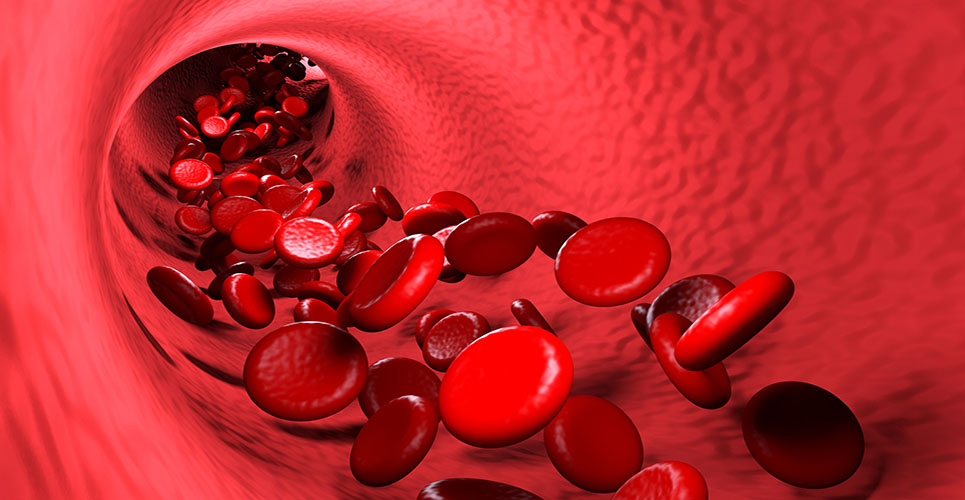teaser
Marcie J Hursting
PhD DABCC
President
Clinical Science Consulting
Austin
Texas
USA
Immune heparin-induced thrombocytopenia (HIT) is a serious prothrombotic condition occurring in about 0.5–5% of heparin-treated patients.(1) Antibodies to a complex of heparin and platelet factor 4 cause intense platelet activation, in turn leading to thrombocytopenia and excessive thrombin formation.(2) Venous and/or arterial thrombosis, sometimes fatal, occurs in 38–76% of patients within a month.(3) HIT should be suspected whenever the platelet count falls ≥50%, and/or new thrombosis develops, 4–14 days after heparin initiation.(4,5) When HIT with or without thrombosis is strongly suspected, heparins should be discontinued and fast-acting nonheparin anticoagulation initiated.(4,5) Low-molecular-weight heparins and coumarins should be avoided in acute HIT.(4–6) Rather, the direct thrombin inhibitors (DTIs) lepirudin, argatroban and bivalirudin and the heparinoid danaparoid are recommended therapies.(4,5)
Alternative anticoagulation in HIT
Table 1 summarises salient features of lepirudin, argatroban, bivalirudin and danaparoid. Table 2 presents American College of Chest Physicians (ACCP) evidence-based grade-level recommendation(4) for each drug in HIT plus dosing guidance from manufacturers and practical experiences. There are no prospective, randomised comparisons of these anticoagulants. For treating HIT, lepirudin is licensed in the USA and Europe, argatroban in North America and several European countries, and danaparoid in many jurisdictions worldwide (but is no longer marketed in the USA or UK).
[[HPE34_Tbl1_93]]
Lepirudin
Lepirudin was evaluated in three historical-controlled prospective studies in HIT.(7–9) In combined study analysis (403 lepirudin-treated patients, 120 controls), lepirudin significantly reduced the composite endpoint of death, amputation and thromboembolic complications within 35 days.(9) Major bleeding with lepirudin was 18%.
Antilepirudin antibodies prolonging lepirudin’s half-life develop in some patients, which necessitates careful monitoring and dose adjustments.(10) Lepirudin re-exposure leads to anaphylactoid reactions, sometimes fatal, in about 0.2% of patients.(11)
Argatroban
Argatroban was evaluated in two historical-controlled prospective studies in clinically suspected HIT.(12,13) In a combined study analysis (697 argatroban-treated patients, 185 controls), argatroban significantly reduced the composite endpoint of death due to thrombosis, amputation secondary to HIT, or new thrombosis within 37 days. Major bleeding with argatroban was 6% (control, 7%).(14)
DTIs, particularly argatroban, prolong the international normalised ratio (INR).(15) Argatroban-treated patients often have INRs >5, without bleeding.(16) Methods for monitoring transition from argatroban to coumarins are published.(17–19)
Bivalirudin
Bivalirudin has not been evaluated in a prospective controlled study in HIT, although retrospective data exist. In one retrospective evaluation, HIT clinical outcomes following bivalirudin (n = 24), argatroban (n = 13) or lepirudin (n = 5) therapy were similar.(20) In another retrospective analysis of 18 bivalirudin-treated patients, no thrombosis and one major bleed occurred.(21)

Danaparoid
Danaparoid demonstrated greater clinical effectiveness than dextran 70 in a randomised trial (with warfarin backdrop) in HIT.(22) In a compassionate-use programme, 9.7% of 1,478 treatment cases developed thrombosis and 8.1% had major bleeding.(23) A retrospective comparison found less bleeding with danaparoid than lepirudin, and when full-dose danaparoid was used, similar reductions in thrombosis.(24) In vitro crossreactivity of danaparoid with HIT sera is about 7–50%, with unclear clinical implications.(25)
Other considerations
These alternative anticoagulants lack antidotes. If excessive anticoagulation occurs, the infusion should be stopped or decreased. Anticoagulant effects of the DTIs (not danaparoid) usually return to baseline within hours. Recombinant factor VIIa and fresh frozen plasma have treated bleeding and accidental overdose with DTIs, respectively.(26–28)
At higher levels of anticoagulation, argatroban and bivalirudin were evaluated (and approved in the USA) in patients with or at risk of HIT undergoing percutaneous coronary intervention (PCI) (see Table 2).(29,30)
[[HPE34_Tbl2_94]]
Regarding newer options, recent retrospective data on the selective factor Xa inhibitor fondaparinux in treating HIT are encouraging.(31)
Longer-term anticoagulation
Continued anticoagulation is justified for approximately one month by the persistent thrombotic risk of HIT and for 3–6 months if thrombosis occurs.(3,32) Warfarin should be initiated only after alternative anticoagulation is adequate and platelet counts have recovered (>100–150 x 109/l). Alternative anticoagulation should be maintained until therapeutic INRs occur for two or more consecutive days.(4,5)
Conclusions
Lepirudin, argatroban and danaparoid each improved HIT outcomes, particularly reducing thrombosis, in prospective studies, and retrospective data support bivalirudin in this setting. Differences among these anticoagulants in their safety, efficacy, salient features, indications in HIT, and regional availability likely affect hospital and prescribing practices for managing HIT.
References
1. Circulation 2005;111:2671-83.
2. Chest 2005;127:9S-20S.
3. Arch Intern Med 2004;164:361-9.
4. Chest 2004;126:31S-37S.
5. Br J Haematol 2006;133:259-69.
6. Arch Intern Med 2004;164:66-70.
7. Circulation 1999;99:73-80.
8. Circulation 1999;100:587-93.
9. J Thromb Haemost 2005;3:2428-36.
10. Blood 2000;96:2373-8.
11. Circulation 2003;108:2062-5.
12. Circulation 2001;103:1838-43.
13. Arch Int Med 2003;163:1849-56.
14. Chest 2006;129:1407-16.
15. Am J Clin Pathol 2004;121:593-99.
16. Clin Appl Thromb Hemost 2005;11:279-87.
17. Thromb Haemost 2001;85:435-40.
18. Thromb Haemost 2004;91:1137-45.
19. Pharmacotherapy 2005;25:157-64.
20. Pharmacotherapy 2006;26:461-8.
21. Pharmacotherapy 2006;26:452-60.
22. Thromb Haemost 2001;86:1170-75.
23. Thromb Haemost 2006;95:967-81.
24. Thromb Haemost 2001;85:950-57.
25. Chong BH, Magnani HN. Danaparoid for the treatment of heparin-induced thrombocytopenia: an overview. In: Warkentin TE, Greinacher A, editors. Heparin-induced thrombocytopenia. New York: Marcel Dekker; 2004.
26. Semin Thorac Cardiovasc Surg Pediatr Card Surg Annu 2004;7:155-71.
27. Pharmacotherapy 2006;26:569-77.
28. Ann Pharmacother 2006;40:446-9.
29. Cathet Cardiovasc Intervent 2002;57:177-84.
30. J Invasive Cardiol 2003;15:611-16.
31. Ann Pharmacother 2006;40:1383-7.
32. N Engl J Med 2006;355:809-17.
33. Blood 2006;108:1492-6.
34. J Thorac Cardiovasc Surg 2006;132:699-700.
35. Chest 2006;129:1167-75.
36. Ann Pharmacother 2007;41:749-54.
Resources
HIT information (background, drugs; slideshows, abstracts, links to drug and relevant society websites)
W: www.heparininducedthrombocytopenia.com
HIT guidelines
W: www.bcshguidelines.com/pdf/hit_220506.pdf
W: www.chestjournal.org/cgi/reprint/126/3_suppl/311S.pdf
Forthcoming events
American Society of Hematology 49th Annual Meeting, Atlanta, USA, 8–11 December 2007
W: www.hematology.org
American College of Clinical Pharmacy Annual Meeting, Denver, USA, 14–17 October 2007
W: www.accp.com
British Society for Haematology 48th Annual Scientific Meeting, Glasgow, UK, 7–9 April 2008
W: www.b-s-h.org.uk/confer00.htm
European Hematology Association 13th Congress, Copenhagen, Denmark, 12–15 June 2008
W: www.ehaweb.org
